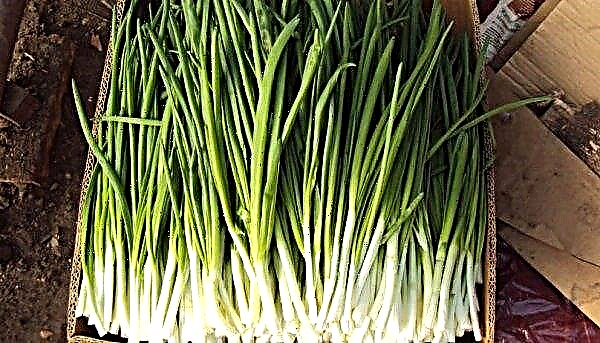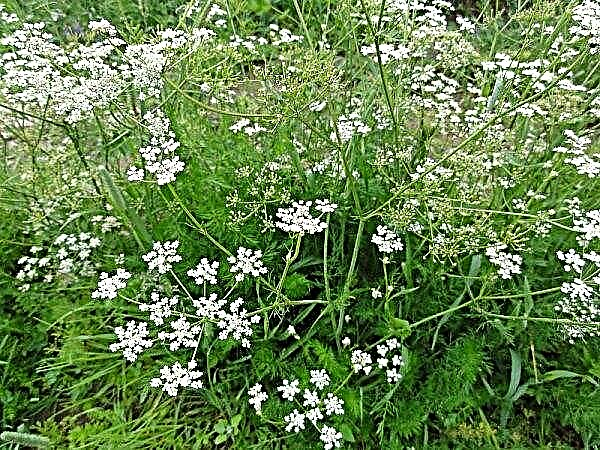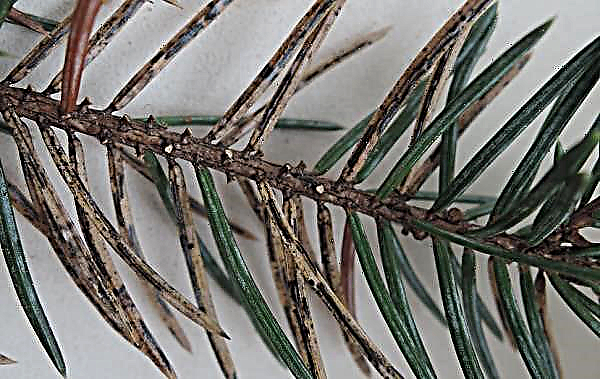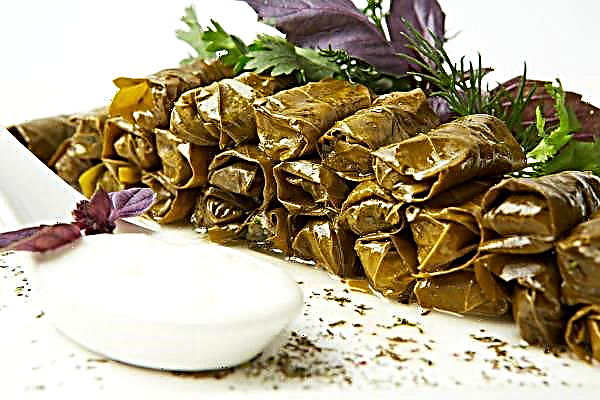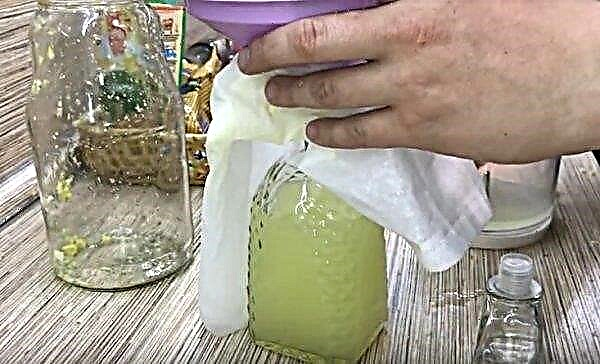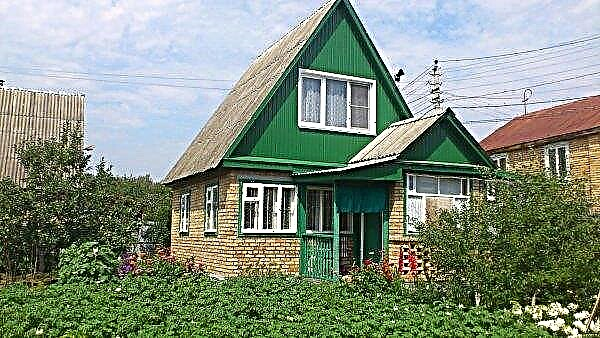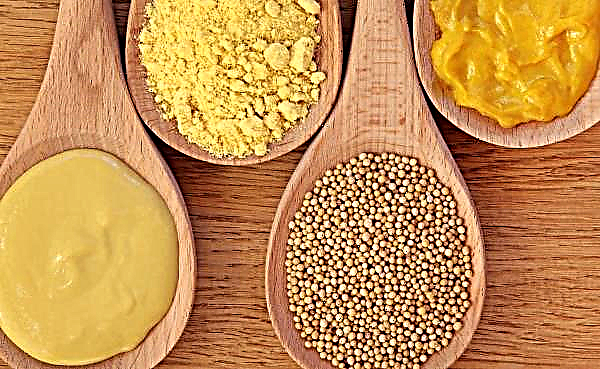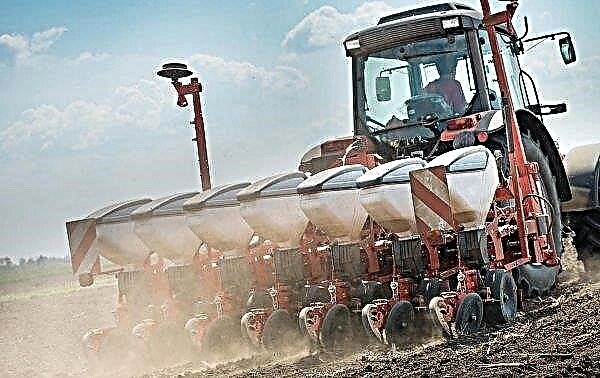Any grower knows the spring time for planting potatoes, but there is another way - to plant in the winter. What are its pros and cons, subtleties and nuances, in more detail below in the article.
Advantages and disadvantages
Practitioners of winter landing summer residents, note many advantages of this method.
- For instance:
- there is no need to take a place in the cellar for tubers;
- all promising eyes of the winter tuber are perfectly preserved;
- with prolonged winter, there is no rush in planting in the spring;
- the threat of return frosts is not terrible;
- there is no need for early weeding in the spring;
- winter bushes do not require hilling;
- the crop ripens about 2 weeks earlier than spring.
If you ask yourself the question: is it possible to plant tubers in late autumn under any conditions, the shortcomings of such a method will emerge.Did you know? The most expensive La Bonnotte potato variety costs about 500 euros per 1 kg. Tubers are grown on the French island of Nurmuatier.
- Cons of the winter option:
- at a temperature of -10 ° C tubers begin to freeze, the method is not for harsh winters;
- slushy spring with an abundance of rainfall will lead to waterlogging and rotting of tubers;
- the method on clay soils and loams, which in the winter period are even more compacted, will be unproductive. In spring, sprouts will not be able to break through a heavy crust on the surface;
- the risk of infecting seeds with insects and diseases that can be detected only during germination for spring planting increases.
Selection of winter varieties
Before planting, it is advisable to ask summer residents experienced in this matter whether all varieties are planted or whether it is desirable to select certain varieties of potatoes.

Those who have already grown vegetables in this way recommend taking exclusively winter varieties of culture, for example:
- Gloria;
- Nevsky
- Latona;
- Sante.
These varieties are immune to most diseases of potatoes and its pests, can easily tolerate temperature extremes.
Potato planting dates for the winter
In the fall, potatoes are planted in the month of October, in the last days. Two weeks before, the seeds are subjected to a greening procedure that saturates the tubers with solanine. Due to the high concentration of this poison, the pests will not touch the crops.
Site selection and preparation
Landing for winter is chosen well-lit, on a small hill. Melted water will accumulate in the lowland, which can lead to rotting of the tubers. About a month before planting, the site is dug up, cleaned of plant debris and spilled with a 1% potassium permanganate solution for disinfection. After make fertilizer "Diamofoska" 20 g / m².
Ways and technology landing
There are many ways to plant potatoes, but for the autumn procedure it is recommended to use the methods described below.
Classical
One of the usual methods of planting potatoes is ordinary beds with respect to the distance.

Scheme:
- With the help of stakes and becheva, the site is divided into lines along which grooves are dug. The distance between them is 60–80 cm, depending on the growth of the selected variety.
- The tubers are laid out in increments of 30 cm, and the depth of the ditches is 8–10 cm.
- Tubers fall asleep in the soil.
- Cover with a layer of fir spruce branches, additionally with a layer of straw.
- To protect the seeds from rodents, poisonous baits are placed on the shelter.
- Then the entire landing is covered with a spanbond.
Important! Do not use plastic sheeting for shelter: the tubers under it will sprinkle.
Alternative
For this method, you must first prepare the hay. Also prepare a nutrient substrate: garden earth, compost and ash in a ratio of 3: 1: 1.
Scheme:
- On the plot selected for potatoes, they heap an even layer with a thickness of 30 cm of hay.
- Mark out the arrangement of rows.
- The distance between the rows is 80–100 cm, between the seeds 50–70 cm.
- Using a sharpened wooden stake in a checkerboard pattern, holes for seeds are punched through a layer of hay.
- A glass of prepared substrate is poured into each well and a tuber is placed.
- Sprinkle with a thin layer of 3 cm of the same soil and plug the hole in the hay blanket with a bundle of dry hay.
- Before snowfall, the bed is covered with a spanbond.
- After the snow falls, it is buried in the hay, removing the shelter.
Cultivation and care
Winter potatoes are practically maintenance free and are not exposed to pests or diseases. Unlike spring crops, there is no need for constant hilling of bushes, weeding from weeds.

Fertilizer
In winter, the seeds received sufficient hardening and were fed with fertilizer applied before planting. Therefore, to feed culture, subsequently, there is no strict need. During and after flowering, plants can be fed with biological preparations, for example, Baikal M-1.
The drug is introduced along with watering, it is prepared in advance. To prepare a working solution, 40 ml of the drug is diluted in 4 l of water, left for 5-7 days in a dark place, adding 1 tbsp each day. l honey or sugar syrup.
Did you know? The first Russian ruler trying to plant potato cultivation was Peter the Great. However, due to ignorance of the agricultural technology of culture, it did not take root at that time.
Soil care
In the spring, as soon as the snow falls, the mulch is raked. Above the site set the arc under the spanbond. No soil care is required at this stage. After the emergence of seedlings with a height of 15 cm, the greenhouse is removed from the beds. The soil is carefully loosened to a depth of 15 cm, bushes are spudded and covered with mulch.

Watering
Watering in winter crops may be required only if the soil dries out in the absence of rainfall. In this case, you need to check the topsoil to a depth of 12-15 cm. Watering is carried out by irrigation from a watering can. Water needs to be used warm not lower than + 20 ° С, settled or rain.
Pest and Disease Control
One of the undoubted advantages of autumn planting is the minimal risk of disease and infection. Before planting, the soil is disinfected, and the tubers, having gone through the landscaping process, increase the content of solanine, which repels living organisms. In frozen winter soil, neither pests nor bacteria are active. In the spring, mulch protects the future crop from both. Hay stick, which is located in the mulch, actively protects the crop from late blight.
If a Colorado potato beetle appears, the drug “Actofit” is used to combat it. This tool is effective against other pests, it is safe for humans, therefore, it can be used during active fruiting. To prepare the emulsion, the drug is diluted with water in a proportion of 4 ml / 1 liter of water.Important! The tubers for disinfection the day before the sowing procedure are soaked for half an hour in a solution of “Fundazole” (10 g / 10 l).
Harvest recommendations
Harvest of winter potatoes ripens 1.5–2 weeks earlier than that planted in spring. It is not difficult to collect it, for this you just need to rake the mulch. If the method of planting in the hay was used, then the crop can be harvested by hand. 7-10 days before harvesting, you need to cut the tops to accelerate ripening.

Harvested for 10-14 days, scattered in a dark room for passage of a kind of quarantine. During this time, excess moisture leaves the tubers, and the peel coarsens, which subsequently will not give bacteria or infections a chance.
It is best to store winter crops in trellised (breathing) boxes or containers. For full protection against pests and diseases, tubers are dusted with wood ash and transferred to bunches of wormwood or other repellents.
Since early ripening or, as the people say, winter varieties are used for winter planting, you can not worry about the keeping quality of the crop. Such varieties yield at least 95% edible products. To plant potatoes for the winter or not: everyone decides for himself. But according to the reviews of experienced vegetable growers in this matter, with this method, the crop is no worse, and care requires significantly less attention.

